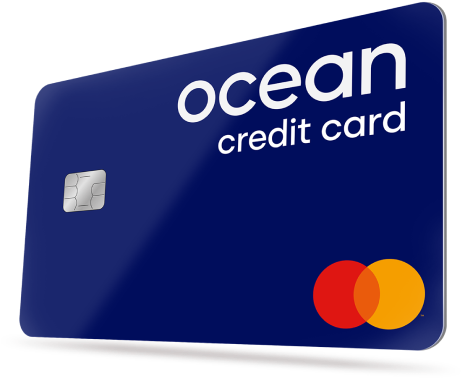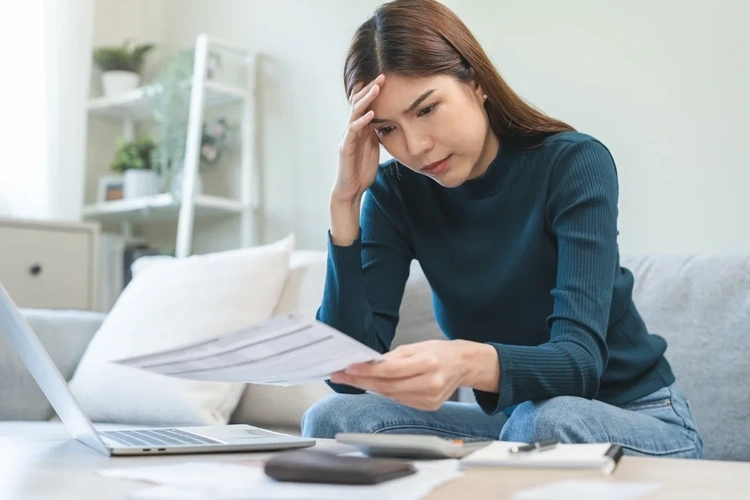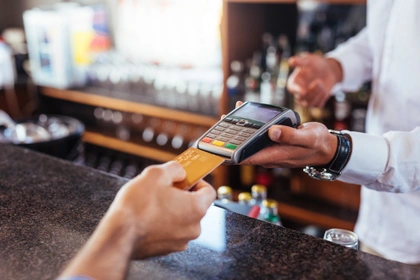What is a credit card statement?
A credit card statement is a monthly bill that shows you how you used your credit card.
Your statement shows you:
- Your credit limit
- How much money you spent
- What you bought
- How much you need to pay back
- When you need to pay it
- Any fees or charges
Most credit card statements are either posted to your home or sent by email. You can also check your statement online through your provider’s website or mobile app.
How to get your credit card statement
You can get your credit card statement in three main ways:
- By post: Your credit card company will send a paper copy to your home address. This usually arrives a few days after your statement date.
- By email: You can ask your credit card company to email your statement instead. This is faster and better for the environment.
- Online banking: Log into your provider’s website or app. Look for a section called 'statements' or 'documents'. You can download and view your statements here anytime.
Most card providers let you see up to seven years of old statements online. This makes it easy to check your spending history or find old transactions.
When do credit card statements come out?
Credit card statements come out once every month. Your statement date stays the same each month. For example, if your statement date is the 15th, you'll get a new statement on the 15th of every month (or the following working day).
Your statement covers all the money you spent in the previous month. So if your statement date is the 15th of January, it will show everything you bought between the 16th of December and the 15th of January.
Most credit card companies send statements between 21 and 25 days before your payment is due. This gives you enough time to check your statement and make your payment.
Ocean Credit Card
See if it's a YES before you apply
- Up to £8,000 credit limit
- Checking won't affect your credit score
- Get a response in 60 seconds
Intelligent Lending Ltd (credit broker). Capital One is the exclusive lender.

What is statement balance?
Your statement balance is the total amount of money you owe on your credit card. You can find this number clearly marked on the first page of your statement.
This balance includes:
- All the money you spent during the month
- Any previous unpaid balance
- Any interest charges from previous months
- Any fees (like late payment fees)
- Your balance minus any money you’ve paid back during the statement period
Your statement balance is different from your current balance. Your current balance changes every day as you spend money or make payments. Your statement balance only shows what you owed on your statement date.
You don't have to pay your full statement balance every month. But if you only pay part of it, you'll likely be charged interest on the remaining amount.
What should you do if there are incorrect transactions on your monthly statement?
Check your credit card statement carefully every month. Look for any spending you don't remember or amounts that seem wrong.
If you find a mistake, contact your credit card company straight away. You can:
- Call the customer service number on your statement
- Use your bank's mobile app to report the problem
- Visit your local branch (if your card provider has one)
When you report a problem, your credit card company will investigate. They might ask you to fill out a form or provide proof that the transaction is wrong.
UK law protects you from fraudulent transactions. If someone used your card without permission, you usually won't have to pay for those purchases.
It can help to keep all your receipts so you’re able to check them against your statement. This makes it easier to spot mistakes quickly.
What does 'CR' mean on a bill?
'CR' stands for 'credit'. When you see 'CR' next to an amount on your statement, it means money was added to your account or taken off your balance.
You might see 'CR' next to:
- Payments you made to your credit card
- Refunds from shops
- Cashback rewards
- Credits from your credit card company (like compensation for problems)
For example, if you returned something to a shop and got £50 back, your statement would show '£50.00 CR'. This reduces the amount you owe.
What does 'DR' mean on a bill?
'DR' stands for 'debit'. When you see 'DR' next to an amount, it means money was taken from your account or added to your balance.
You might see 'DR' next to:
- Purchases you made
- Interest charges
- Fees (like annual fees or late payment charges)
- Cash advances (taking cash out using your credit card)
For example, if you bought groceries for £30, your statement might show '£30.00 DR'. This adds to the amount you owe.
Most transactions on your credit card will be 'DR' because you're spending money.
Statement date vs due date
Your statement date and due date are two different things. It's important to understand both.
- Statement date: This is when your credit card company creates your monthly statement. It's like taking a photo of your account on that day. Everything you spent before this date goes on your current statement.
- Due date: This is when you need to pay your credit card bill. Your due date is usually 2-3 weeks after your statement date.
For example:
- Statement date: 1st March
- Due date: 25th March
You have from 1st March until 25th March to pay your bill. If you pay late, you might be charged a fee.
Mark your due date in your calendar or set up a Direct Debit so you never miss a payment.
I paid my statement balance, but it's still there?
This can be confusing, but it's normal. Here's what might be happening:
- Your payment is still processing: Bank transfers can take 1-3 working days to go through. Your payment might not show up on your account straight away.
- You've made new purchases: If you bought something after your statement date but before your payment went through, your balance will include these new purchases.
- You're looking at the wrong balance: Remember, your statement balance and current balance are different. Your statement balance won't change, but your current balance will go down when your payment processes.
If you're still worried, call your credit card company. They can explain exactly what's happening with your account.
How long should you keep credit card statements?
Keep your credit card statements for at least 12 months. This helps you:
- Check for mistakes on future statements
- Prove you made payments if there's ever a problem
- Track your spending patterns
- Complete your tax return if you're self-employed
You might want to keep statements longer if:
- You use your credit card for business expenses
- You're applying for a mortgage (lenders often want to see several months of statements)
- You have a dispute that's taking a long time to resolve
If you get electronic statements, save them to your computer or print important ones. Digital copies can sometimes disappear if you change banks or close your account.
Remember: Check your credit card statement every month to stay in control of your spending. If anything looks confusing or wrong, call your credit card company straight away.
Disclaimer: We make every effort to ensure content is correct when published. Information on this website doesn't constitute financial advice, and we aren't responsible for the content of any external sites.






